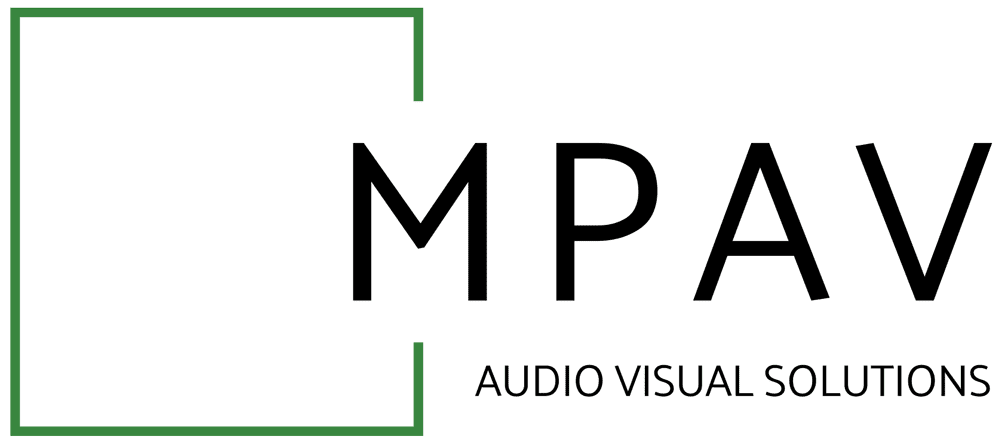You work so hard on your business every day, so why strive for anything less than perfect? We have so many conversations with clients that start with ‘what we normally have to do is….’ And they reel off a long list of things they shouldn’t need to do just to get a system to function. And it’s not just older systems that have been inherited, but even brand-new systems. Audio-visual as a trade is not regulated by a single body. In theory, anybody can use any fixing to put a screen on a wall, throw cables wherever needed (as long as it is considered safe by Health and Safety standards) and leave you with a meeting room that you are ashamed to show to your clients. So, when should you consider getting something sorted?
First Impressions
These are the bits that everybody sees. If you’ve noticed it, or had a colleague mention it, your clients will have noticed it too. Whether your colleagues are in your London or Manchester offices, they need to have the same experience. Don’t give them any opportunity to discuss anything other than your product or your service.
Damaged screen
The strange colouration on the screen that welcomes clients into your offices, the burnt in image of the news ticker or the dangling cable, your client’s eyes will be drawn towards that screen as they wait for you. Why have a 24-hour news feed not displaying your company’s latest product? Why not inform colleagues who are visiting the office from home clearly? Blurred content is absolutely not acceptable. Commercial grade screens are built for this exact purpose, and remotely managed media players are acceptable.
Mess under the table
You’ve probably walked into a meeting room and seen a bunch of cables under the table and assume that’s how cables are supposed to be. You’ve got to get them to the table somehow, right? Why not keep them tied together within cable management. Not only is it unsightly for your clients, but if somebody catches their feet on them and pulls the cables, you risk damaging the cables and the connections, meaning a service call-out to fix something easily preventable. This also includes those cable exit holes that are next to a TV, rather than behind. A little thought and your AV is perfectly seamless.
Unknown equipment
As an IT professional being called out to an AV problem, or indeed dealing with the issue yourself, have you ever looked at something and wondered where it went? Or which one of the plugs turns off JUST the TV and not the entire control system? Labelling is crucial in any environment and making sure you can solve a problem quickly helps you get back to what you do best. Not labelling equipment and cables is unacceptable.
Some of it works, some of it doesn’t
People aren’t always in your meeting rooms and offices. Working hybrid means that systems need to work and be simple enough to understand. Even if just one small element doesn’t work, it can cause issues that need resolving by whoever happens to use it, or it means you cannot use/sell that space because the equipment doesn’t work. We’ve worked with businesses whose AV works great, but their control system is not functioning meaning their conference room needs individually switching on by a member of their teams and they have an expensive screen on the wall that doesn’t work. This is not acceptable.
The bits you don’t see
These are the elements that you don’t see until you peel back the curtain but we see all the time. Whilst AV isn’t regulated, the principles remain the same. Make systems clear and easy to service and make them safe. Looking inside the back of a rack should be an easy job. If the cables are bunched up and equipment isn’t cleaned regularly, items can overheat quickly and become damaged. Not only that, they can’t be serviced quickly getting you back to your best.
The biggest element that is over-looked are cables in a ceiling space. Electrical works have regulations about how cables need to be fixed or put in containment for safety, especially those overhead. If a fire were to break out, the cables need to be protected, or at least within metal fixings to stop them dropping from the ceiling. Cabling should also be LSOH (Low Smoke Zero Halogen) for similar reasons. If there were a fire, the cables won’t produce thick clouds of toxic smoke. So having cheap cabling, randomly draped across your ceiling is unacceptable.
Stop putting up with half a system, poorly installed systems and potentially dangerous systems and get them sorted whilst you have a chance. Here at MPAV, we can help you build a new system, repair what you currently have or even advise you whether your system is ready to go. Take advantage of our free systems health check today by contacting us at info@mpav.co.uk or on 01296 593818.
